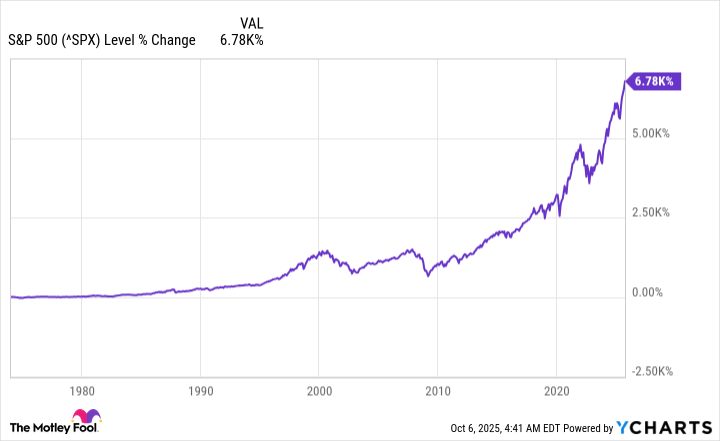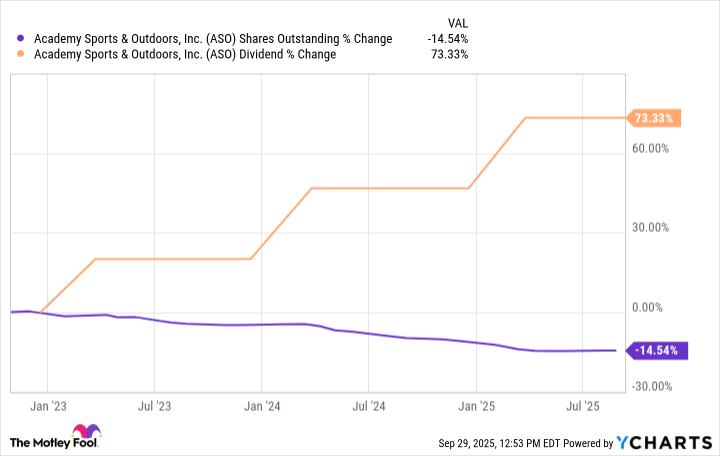Iconic Insurer Purged From Major Institutional Portfolio, According to Recent Filing
On October 17, 2025, Shaker Investments disclosed it sold out of The Progressive Corporation (PGR 0.83%), liquidating 9,829 shares for an estimated $2.62 million.
What Happened
Shaker Investments disclosed in a filing with the Securities and Exchange Commission dated October 17, 2025, that it had sold its entire stake in The Progressive Corporation in the third quarter. The liquidation involved 9,829 shares, with an estimated transaction value of $2.62 million based on the average price for the quarter. The fund’s post-trade holding in the insurer is now zero shares.
What Else to Know
The fund sold out of Progressive, reducing its allocation from 1.07% of 13F AUM in the previous quarter to zero.
Top holdings after the filing:
- NYSE:AX: $33.84 million (13.5% of AUM)
- NASDAQ:AVGO: $12.30 million (4.9% of AUM)
- NASDAQ:NVDA: $12,301,219 (4.9% of AUM)
- NASDAQ:MSFT: $8,486,093 (3.4% of AUM)
- NASDAQ:GOOGL: $8,297,003 (3.3% of AUM)
As of October 16, 2025, shares of Progressive were priced at $221.74, down 13.17% over the past year; shares have underperformed the S&P 500 by 24.06 percentage points over the past year.
Company Overview
| Metric | Value |
|---|---|
| Revenue (TTM) | $85.17 billion |
| Net Income (TTM) | $10.71 billion |
| Dividend Yield | 2.17% |
| Price (as of market close 2025-10-16) | $221.74 |
Company Snapshot
The Progressive Corporation is a leading U.S. property and casualty insurer with a diversified portfolio spanning auto, residential, and specialty insurance lines. Its multi-channel distribution model includes independent agencies, online, and phone channels.
The company offers personal and commercial auto insurance, residential property coverage, and specialty property-casualty products, including insurance for motorcycles, RVs, watercraft, and business vehicles. It generates revenue primarily from underwriting insurance policies and related services.
Progressive serves individual consumers, small businesses, and property owners across the United States through direct channels and independent agencies.
Foolish Take
By selling its entire stake of more than $2.6 million worth of Progressive stock, Shaker Investments has cut loose one of America’s largest insurers. Should retail investors do the same? Let’s have a closer look.
It’s been a less than stellar year so far for Progressive. Shares have declined (3.9%) year-to-date, while the S&P 500 has advanced by 14.5%. Even within the insurance sector, Progressive has lagged major benchmarks, such as the SPDR S&P Insurance ETF (KIE) and iShares US Insurance ETF (IAK), which have generated a total year-to-date return of 1.5% and 1.8%, respectively.
Adding to the stock’s tough year, Progressive recently released disappointing third-quarter earnings results on October 15. Both earnings-per-share and revenue came in below analysts’ estimates, with Progressive stock falling on the announcement. In addition, the company noted that it was recording a nearly $1 billion expense related to a change in Florida policy that limits profits on auto insurance in the state. Despite these setbacks, the company reported increased premiums written and earned, indicating growth in the company’s core operations.
At any rate, retail investors looking for exposure to the insurance sector may want to consider a broad-based ETF, like the SPDR S&P Insurance ETF (KIE) or the iShares US Insurance ETF (IAK). These ETFs provide diversification within the sector, ensuring that investors aren’t as exposed to operational risks at any single company.
Glossary
Exited its position: When an investor sells all shares of a particular investment, fully closing out that holding.
13F reportable assets under management (AUM): The total value of securities a fund must report quarterly to the SEC on Form 13F.
Allocation: The percentage of a fund’s assets invested in a specific security or asset class.
Liquidation: The process of selling an investment position, often fully, to convert it into cash.
Stake: The amount or percentage of ownership an investor holds in a company or asset.
Dividend Yield: A financial ratio showing how much a company pays in dividends each year relative to its share price.
Distribution model: The methods a company uses to sell its products or services to customers (e.g., direct, agencies).
Underwriting: The process by which an insurer evaluates and assumes the risk of insuring a person or asset.
Property and casualty insurer: An insurance company providing coverage for property loss and liability for accidents, injuries, or damage.
Specialty insurance lines: Insurance products designed for unique or non-standard risks, such as motorcycles or RVs.
TTM: The 12-month period ending with the most recent quarterly report.
Jake Lerch has positions in Alphabet and Nvidia. The Motley Fool has positions in and recommends Alphabet, Axos Financial, Microsoft, Nvidia, and Progressive. The Motley Fool recommends Broadcom and recommends the following options: long January 2026 $395 calls on Microsoft and short January 2026 $405 calls on Microsoft. The Motley Fool has a disclosure policy.












